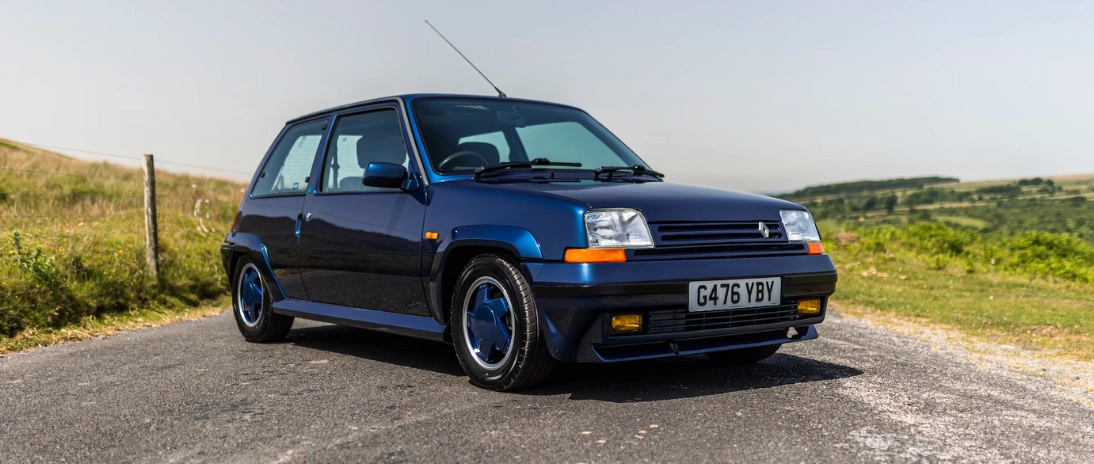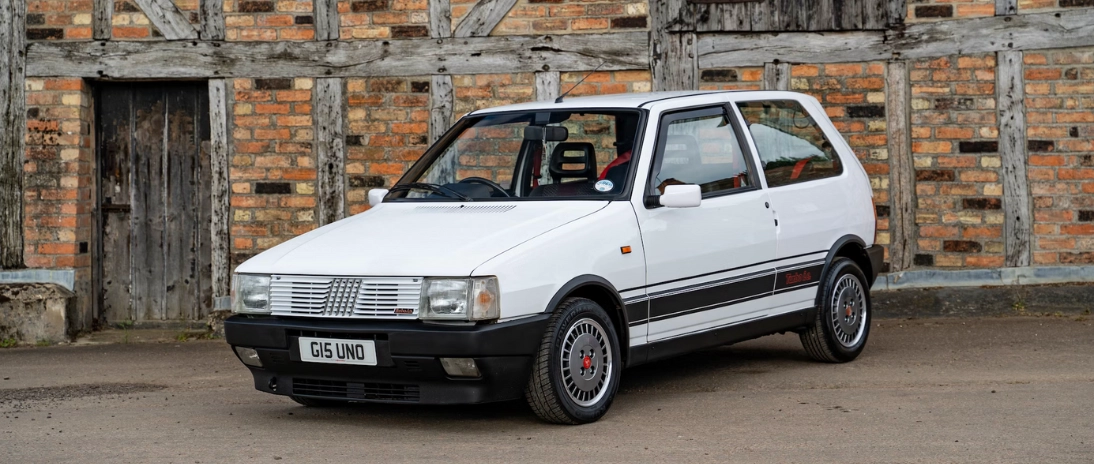The 1980s and early 90s were a golden age for the automotive industry, especially for fans of compact, high-performance cars. During this time, manufacturers across Europe unleashed a wave of lightweight, turbocharged machines that combined accessible performance with an engaging driving experience. These cars weren’t just about going fast in a straight line; they were about agility, control, and the sheer joy of driving. At the forefront of this hot hatch revolution were icons like the Renault 5 Turbo, Peugeot 205 GTI, and Fiat Uno Turbo, each with its unique personality and loyal following. Today, we’re diving into what made these hot hatches so unforgettable.
Renault 5 Turbo: The Rally-Bred Rebel

The Renault 5 Turbo is, without question, one of the wildest creations to come out of this era. Born from Renault’s desire to create a rally-ready vehicle, this car wasn’t your average hatchback with a bit of extra power; it was a full-on pocket rocket. Unveiled in 1980, the Renault 5 Turbo was based on the humble Renault 5 but was transformed in almost every conceivable way. With its mid-engine, rear-wheel-drive layout, the 5 Turbo was unlike any other front-wheel-drive hot hatch of the time.
Under the hood, or rather, behind the driver’s seat, sat a turbocharged 1.4-liter engine producing around 160 horsepower. While this may not seem like much by today’s standards, the Renault 5 Turbo was feather-light and incredibly nimble, making it a joy to throw around tight bends. The wide, flared wheel arches and aggressive styling hinted at its racing pedigree, while its bold colours and striking appearance made it an instant classic. The 5 Turbo dominated in rally stages and became a cult favourite for its quirky layout and raw driving experience.
Peugeot 205 GTI: The King of the Hot Hatches

If the Renault 5 Turbo was the rally king, the Peugeot 205 GTI was the undisputed king of the streets. Introduced in 1984, the 205 GTI quickly built a reputation as one of the most enjoyable front-wheel-drive cars ever made. Peugeot offered it in both 1.6-liter and 1.9-liter versions, and while the power output ranged between 105 and 130 horsepower, the car’s light weight and finely tuned chassis made it a beast on twisty roads.
The 205 GTI didn’t just focus on power but on balance and feedback, giving drivers an unparalleled sense of control. Its steering was direct, the suspension was firm but forgiving, and the handling was razor-sharp, making it a joy to drive fast or slow. The car’s simplicity was part of its charm; there was no turbocharging or complex technology here—just a lightweight chassis, responsive handling, and a lively engine that begged to be revved. The 205 GTI was affordable, practical, and a riot on the road, making it an instant favourite among enthusiasts and securing its place as a hot hatch icon.
Fiat Uno Turbo: The Underdog with a Bite

The Fiat Uno Turbo may not have the same cult following as the Renault 5 Turbo or the Peugeot 205 GTI, but it deserves a place in the pantheon of 80s hot hatches. Fiat took the practical, boxy Uno and injected it with turbocharged adrenaline, producing a compact car that was quick, agile, and surprisingly sophisticated for its time. Launched in 1985, the Uno Turbo featured a 1.3-liter turbocharged engine producing around 105 horsepower, which was plenty of punch for such a lightweight car.
The Uno Turbo stood out with its turbocharged performance, giving it a different character from its naturally aspirated rivals. The boost came on strong, delivering a surge of power that kept drivers on their toes. The car’s lightweight construction meant it could go from 0-60 mph in under 8 seconds—a serious number back then for a small, affordable car. It also came with advanced features for the time, such as electronic fuel injection, which gave it a more refined drive than one might expect. The Uno Turbo was an underdog that proved Fiat could produce a serious performance car, and it remains a beloved classic among those in the know.
What Made These Hot Hatches So Special?
These cars weren’t just fast—they had personality. The Renault 5 Turbo’s mid-engine layout made it unique, while the Peugeot 205 GTI’s razor-sharp handling made it a joy to drive. The Fiat Uno Turbo offered a taste of turbocharged power that felt raw and exciting. Each of these cars provided a thrilling experience without breaking the bank, making them accessible to a wide range of enthusiasts.
Moreover, these cars were practical enough for daily use, which added to their appeal. You could drive a 205 GTI to work during the week and take it to the track on the weekend. The Renault 5 Turbo might have been more extreme, but it still offered a glimpse of rally-level performance in a compact form. Meanwhile, the Uno Turbo showed that even budget-friendly cars could be fast and fun.
Legacy and Influence on Modern Hot Hatches
The Renault 5 Turbo, Peugeot 205 GTI, and Fiat Uno Turbo left a lasting impact on the automotive world. They showed manufacturers and consumers alike that small cars could be just as thrilling to drive as larger, more expensive sports cars. These cars set the template for future hot hatches, blending practicality with performance in a way that still influences car design today.
In the 21st century, hot hatches have evolved, but they still carry the DNA of these 80s legends. The appeal of a compact, powerful car that’s equally at home on a winding road as it is on the daily commute lives on in modern icons like the Volkswagen Golf GTI, Ford Fiesta ST, and Renault Clio RS.
In Summary
The Renault 5 Turbo, Peugeot 205 GTI, and Fiat Uno Turbo were more than just cars; they were symbols of an era when driving was raw, thrilling, and unfiltered. They captured the spirit of the 80s, a time when performance cars didn’t rely on advanced technology or complex electronics but rather on light weight, clever engineering, and driver skill. These hot hatches may now be classics, but they continue to inspire car enthusiasts and represent an era that will always be remembered as the golden age of driving.

